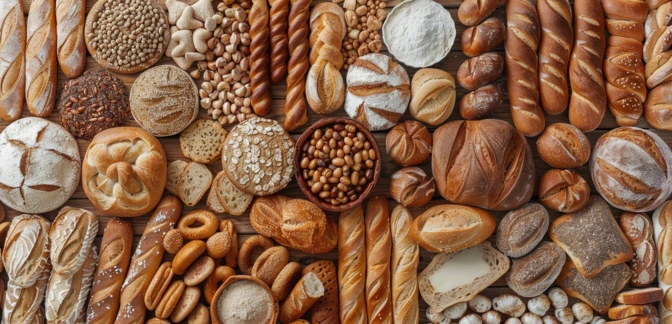Baguette — Nutrients, Health Benefits, and Shopping Tips

Written by Listonic Team
Last update on September 4, 2024
Nutrients
Nutrition facts
Amount per 100 g
Calories
🔥 289 kcal
| Nutrients per: 100 g | Value | % Daily Value* |
|---|---|---|
| Carbs | 58 g | 21.09% |
| Fiber | 3 g | 10.71% |
| Sugars | 3 g | 6% |
| Glycemic Index | 95 | - |
| Protein | 10 g | 20% |
| Sodium | 610 mg | 26.52% |
| Total Fat | 1 | 1.28% |
*The % of Daily Value (DV) tells you how much a nutrient in a serving of food contributes to a daily diet. 2,000 calories a day is used for general nutrition advice.
10 g
🧀 Good Protein Content
1 g
🥕 Low Fat Content
Key takeaways
Health benefits
- Provides energy from carbohydrates, making it a good source of quick and sustained energy.
- Low in fat, making it a suitable option for those looking to reduce fat intake.
- Can be a source of whole grains if made with whole grain flour, supporting digestive health and providing essential nutrients.
- Versatile and nutritious when paired with a variety of healthy toppings like vegetables, lean proteins, and healthy fats.
Health risks
- High glycemic index which can cause rapid spikes in blood sugar levels, particularly concerning for diabetics.
- Low nutrient density as baguettes are typically made from refined white flour, lacking in essential nutrients and fiber.
- High calorie content which can contribute to weight gain if consumed in large quantities, especially when paired with high-fat toppings.
- Potential choking hazard especially for young children or the elderly due to the crusty exterior if not properly chewed.
How to choose baguette
A perfect baguette boasts a golden-brown crust that crackles when squeezed, revealing a soft, airy interior. The crust should be thin but crisp, a sign of expert baking techniques. A fresh baguette will have a pleasant, slightly tangy aroma.
Avoid baguettes that are pale and soft with a thick, tough crust, as these traits suggest underbaking or stale bread. Baguettes that feel excessively heavy or solid are likely not fresh, which can greatly diminish their flavor and texture.

How to store baguette
Fresh baguettes are best enjoyed the same day they are baked. For short-term storage, keep them in a paper bag at room temperature to maintain the crust. If you need to keep a baguette longer, wrapping it in foil and freezing is recommended.
Humidity and airtight containers can make a baguette's crust soft and chewy, which is undesirable. Do not refrigerate baguettes, as this can cause them to become stale quickly. Reheat a frozen baguette in the oven to restore its crispness before serving.
✅ Extra Tip
How long does it last?
Baguettes are best consumed within 1-2 days for optimal freshness. To extend their shelf life, store them in a paper bag at room temperature. Baguettes can also be frozen for up to 3 months; reheat them in the oven to restore their crispiness.
What to do with leftovers?
Leftover baguette can be transformed into many delicious dishes. Slice it thinly and toast for crostini, perfect for topping with bruschetta or cheese spreads. Baguette slices can also be used to make French toast or bread pudding for a sweet treat.
Use stale baguette to create homemade croutons or breadcrumbs, which can be used in a variety of recipes. It’s also perfect for making garlic bread by spreading with butter and garlic, then toasting until golden. If you have a lot of leftover baguette, consider making a panzanella salad, where the bread soaks up the flavors of tomatoes, basil, and vinaigrette. Baguette slices can also be used as a base for open-faced sandwiches or topped with melted cheese for a quick snack.
👨⚕️️ Medical disclaimer
Discover products from other categories
Listonic Team
Fact-checked
Our editorial team checked this article to make sure it was accurate at the time of publishing it.
Get the top-rated shopping list app







